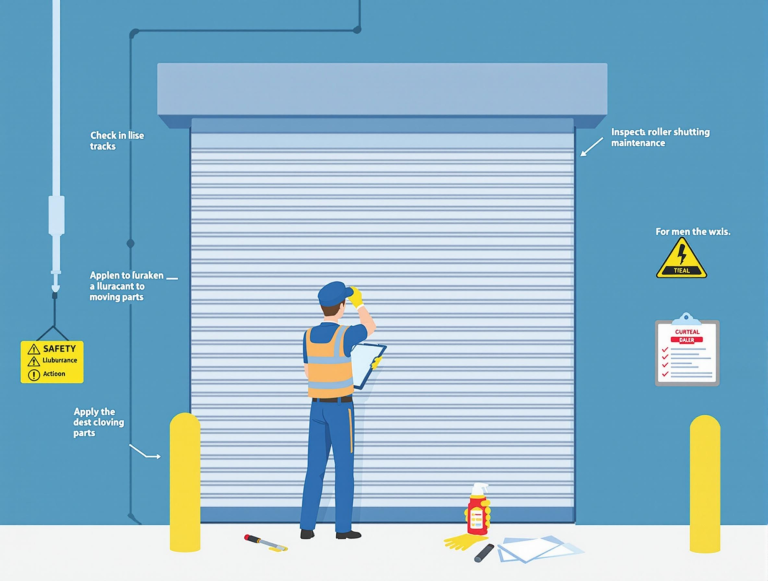info@roller-shutter.uk 01392270218

Extend Your Shutter's Lifespan: Essential Roller Shutter Maintenance Tips for Property Owners
Your roller shutters are a significant investment in your property's security, energy efficiency, and overall functionality. Like any mechanical system, they require regular care to perform optimally and last for years. This article from HVP Security Shutters provides property owners with essential roller shutter maintenance tips, guiding you through simple DIY checks, explaining the crucial importance of regular professional servicing, and detailing why consistent cleaning of roller shutters is vital to extending their lifespan and ensuring reliable operation.
Why Roller Shutter Maintenance is Crucial
Neglecting your roller shutter maintenance can lead to inconvenient breakdowns, costly shutter repairs, and even compromised security. Regular upkeep ensures:
- Extended Lifespan: Proactive care prevents premature wear and tear, making your investment last longer.
- Optimal Performance: Smooth, quiet, and efficient operation every time.
- Enhanced Safety: Ensures all safety features are functioning correctly, protecting users and property.
- Cost Savings: Identifying minor issues early can prevent them from escalating into expensive emergency repairs.
- Warranty & Compliance: For many commercial and industrial roller shutters, regular servicing is often a requirement for warranty validation and legal compliance.
Simple DIY Checks for Property Owners
While professional servicing is key, there are several easy checks you can perform regularly to keep your roller shutters in good condition:
- Visual Inspection (Monthly/Quarterly):
- Shutter Curtain: Look for any visible damage like dents, bends, cracks, or signs of rust on the slats. Check for loose fasteners.
- Guide Rails (Side Channels): Inspect for obstructions (leaves, dirt, debris), signs of wear, or misalignment. Ensure nothing is blocking the path.
- Bottom Bar: Check for damage or warping.
- Shutter Box: Briefly inspect the housing for any obvious damage or unusual sounds.
- Listen & Feel (Weekly):
- Operate the shutter a few times. Listen for any unusual grinding, squealing, rattling, or groaning noises.
- Feel for any jerky or uneven movements, or if it feels heavier than usual (for manual shutters).
- Basic Cleaning (Quarterly/Monthly, depending on environment):
- Remove Loose Debris: Use a soft brush or a vacuum cleaner with a brush attachment to remove dust, cobwebs, and loose dirt from the shutter curtain, especially in the gaps between the slats and within the guide rails.
- Wash Down: For stubborn grime, use a soft cloth or sponge with a solution of mild detergent and warm water. Wipe down the slats and guides gently.
- Avoid Abrasives: Never use harsh chemicals, abrasive cleaners, steel wool, or high-pressure washers as these can damage the finish, paintwork, or even the material of your roller shutters.
- Rinse & Dry: Rinse off any soap residue with clean water and allow the shutter to dry completely before operating it.
- Lubrication (Every 6-12 Months):
- Apply a dry lubricant or silicone-based spray (specifically designed for moving parts or garage doors) to the inside of the guide rails, the roller bearings, and any other visible moving parts.
- Avoid oil-based lubricants: These can attract and trap dirt, leading to more issues.
- Operate the shutter a few times after lubricating to distribute the product evenly.
- Test Controls:
- Check that your remote control is working, and test any wall-mounted switches or key switches for proper function. Replace batteries in remotes as needed.
The Importance of Regular Professional Servicing
While DIY checks are valuable, they are no substitute for a comprehensive professional roller shutter service. For commercial, industrial, and even domestic roller shutters, an annual (or more frequent for high-use/exposed shutters) professional inspection by a qualified engineer is vital.
A professional service typically includes:
- In-depth Mechanical Inspection: Checking motors, gearboxes, springs, bearings, and shafts for wear, fatigue, and correct tension.
- Electrical System Check: Inspecting wiring, control panels, safety circuits, and limit switches.
- Safety Feature Testing: Verifying the proper function of safety brakes, anti-trap mechanisms, photo cells, and bottom safety edges. This is critical for preventing accidents.
- Alignment & Balance: Adjusting components to ensure the shutter runs smoothly and evenly.
- Thorough Cleaning & Lubrication: Professional tools and lubricants for hard-to-reach areas.
- Identification of Minor Faults: Catching small issues before they escalate into major, costly breakdowns.
- Compliance Documentation: Providing a service log or certificate, which is often legally required for commercial premises and can validate insurance policies or warranties.
When to Call a Professional (Beyond DIY Capabilities)
Contact HVP Security Shutters for professional assistance if you notice any of the following, as these typically indicate a problem beyond simple DIY fixes:
- The shutter is stuck, making unusual noises, or operating erratically.
- Visible structural damage to the shutter curtain, guides, or box.
- Any issues with electrical components or the motor.
- Failure of safety features (e.g., photo cells not detecting obstacles).
- Your shutter is a fire-rated shutter (these require specialist, certified maintenance).
- You are unsure about any aspect of maintenance or feel uncomfortable performing a check.
Consistent roller shutter maintenance is a small investment that pays significant dividends in longevity, performance, and peace of mind. By combining simple regular checks with professional annual servicing, you can ensure your security shutters remain a reliable and durable asset for your property for many years to come.